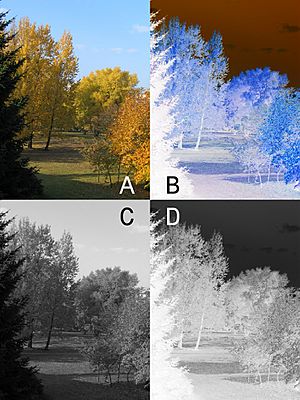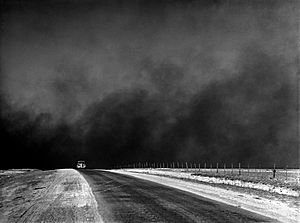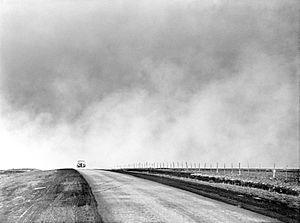Negative (photography) facts for kids
In photography, a negative is a special kind of image. It's usually found on a clear strip of plastic film. What makes it unique is that the lightest parts of the real scene look darkest on the negative. And the darkest parts of the scene look lightest!
This happens because the film uses super sensitive chemicals. These chemicals get dark when light hits them. So, when you take a picture, bright areas make the film very dark. Dark areas make it stay light.
For color negatives, the colors are also flipped. Each color changes into its complementary color. For example, red becomes cyan, green becomes magenta, and blue becomes yellow. Color negatives often have a slight orange tint. This tint helps make the final printed colors look better.
Negatives are mostly used to create regular pictures. These are called positive prints. You can do this by shining light through the negative onto special photographic paper. This is often done with a photographic enlarger. The paper also gets darker when light hits it. This second flip brings the light and dark areas back to normal.
Long ago, negatives were sometimes made on thin sheets of glass. Some of the very first negatives were even made on paper.
You can also make clear positive pictures. These are made by printing a negative onto special positive film. This is how traditional motion picture films are made for movie theaters. Some camera films are designed differently. They use a special process called reversal processing. This makes a positive image directly on the original film. These film or glass positives are called transparencies or diapositives. If they are in small frames, they are often called slides. People use them in a slide projector or magnifying viewer.
What is a Negative Image?
| Positive color | Negative color |
|---|---|
A positive image is what you normally see. It shows light areas as light and dark areas as dark. A negative image is the opposite. Light areas look dark, and dark areas look light.
For color negatives, the colors are also reversed. Red areas appear cyan, green areas look magenta, and blue areas turn yellow. This is because they are complementary colors.
Film negatives usually have less contrast than the final printed pictures. But they can capture a wider range of light and dark details. This is called a wider dynamic range. The contrast usually increases when the negatives are printed onto photographic paper. When negative film images are turned into digital files, their contrast can be adjusted. This often happens during scanning or later editing.
How Negative Film Works

Film for cameras, like the common 35 mm still format, comes as a long strip. This strip has a special light-sensitive coating called photographic emulsion. It also has small holes along its edges. The film is rolled up inside a light-proof container called a cassette.
Before you take a picture, the camera pulls out a fresh part of the film. This part goes behind the camera lens. After all the pictures are taken, the film rolls back into its cassette. Once the film is chemically developed, you see a series of small negative images on the strip. This strip is then often cut into smaller pieces. This makes them easier to handle and store.
Medium format cameras use 120 film. This film creates negatives that are 60 mm wide. Large format cameras take each picture on a single sheet of film. These sheets can be as big as 20 x 25 cm (8 x 10 inches) or even larger! Each of these photographed images is called a negative. A whole strip or set of images can be called "the negatives." They are the original images from which all positive prints are made. So, they are handled and stored with great care.
Many photography methods create negative images. The chemicals in the film react when light hits them. During development, they produce tiny dark silver particles or colored dyes. The more light that hit the film, the more particles or dyes are formed. When you create a negative image from another negative image, you get a positive image. It's like multiplying two negative numbers in math. This is why most chemical-based photography is a two-step process. It uses negative film and ordinary processing.
However, special films and development methods exist. These can create positive images directly on the film. These are called positive, slide, or reversal films. They use a process called reversal processing.
Even though digital cameras are popular, many artists still use film. Some fine art photographers create negatives from digital images. They use these negatives for special printing methods. These include cyanotypes, gum bichromate, and platinum prints.
See also
 In Spanish: Negativo fotográfico para niños
In Spanish: Negativo fotográfico para niños




